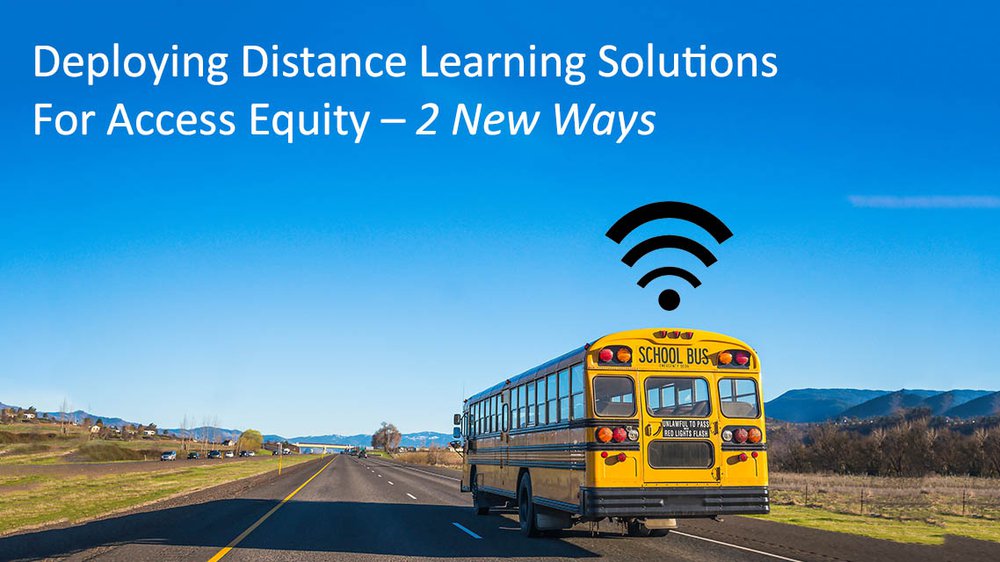The challenges created by distance learning have put a sharp lens on the lack of access equity for students (and their families). Fortunately, the problems are not insurmountable, and districts are finding solutions to connect all or nearly all their learners. In this Learning Counsel virtual discussion, find out what successful school leaders and smart tech companies are doing to ensure that every learner has access to the same high-quality education.
According to LeiLani Cauthen, CEO and Publisher at the Learning Counsel, “There are complications now in the market that are beyond just what was happening with quarantines and what will happen with social distancing to change schedules. Schools are seeing a possible loss of enrollment going into fall. There have been a lot of national polls on the consumer side, talking about parents saying they just don't want to come back. They've been exposed to homeschooling maybe in a good way, maybe in a, not so good way, but they're shopping alternatives. And some of the districts are starting to freak out about that, which is really a reason to upgrade and look at how exactly you're addressing equity. Because if you haven't done a good job of it, it may be a reason for parents to say, ‘I'm out.’ And then there're other things happening with regards to kids being disengaged because their access just isn't that great. And if it's not a great experience, then they're looking at what you're doing with distance learning in your schools and districts as not very favorable. So that uncertainty rising because of inequity, we've been seeing it all over.”
Eric Heinrich is the Senior Manager for Education at CommScope. Eric Said, “Without being insensitive, Although this pandemic is certainly not something we deserved, it may be the catalyst we needed as a nation to really look at this challenge of digital inequity. I served for seven years with the San Francisco Unified School District before I joined CommScope, so this is not an entirely new topic for me, it is something that I've been passionate about for years. Even before the pandemic, we were seeing an acceleration of what is beyond the walls of the campus. The current impacts are tremendous on individuals and families. So I want to be sensitive to that; I'm feeling positive that there's been so much more attention placed on this critical issue of making sure that everyone has access and the support they need to get that access and I think we're going to wind up in a better place.”
According to Robert Werhanowicz, Director of Information Technology at Buckeye Union School District in Arizona, “To address the equity issue, we procured Wi-Fi hotspots that we have had delivered to us. We set them up with CIPA (Children’s Internet Protection Act) compliant web filtering. So that bridged a gap if you will, on our no Internet equity, because we are a full 100 percent, 24/7, 1:1 district. So, the students all had devices and we had to bridge that gap between no Internet, because we're a rural community. A lot of the students either on farms or ranches or out in the rural areas, didn't have Internet. So, we assessed that and brought probably up to about 99 plus percent of our students online by deploying hotspots. So cellular hotspot, and again, CIPA compliant, and then limited to just Internet access for their devices. We had several buses that we call our trip buses or long run buses. We have a bus run that drives students about an hour one way to school. We did have Wi-Fi on those originally. We had a limited number, so that didn't really bridge a great gap but it did allow the students to go to a location and get Internet access if they needed.”
Randy Phelps, Chief Technology Officer at East Side Union High School in California said, “We passed a tech bond and we started pursuing with the city the idea of providing WiFi access for all of our students through our security. The part that we put to the city was that they needed to provide access to the community because we knew our security was only as good as we could protect it. And the best way to protect it was not to put kids in a bind where their parents would be asking for their login and their password. But instead that they would be provided WiFi access to their own. So, we embarked on a project with the city. What we use is municipal buildings, traffic lights, light poles, and we've built out to where our kids live. It provides a lot of kids with access inside their houses, but it provides about 80 percent of our kids access. If they want to sit in the front porch that in their backyard or whatever, which is perfect.”
Watch the video
Without access to high speed Wi-Fi, distance learning is a non-starter for your learners. In this discussion, two of America’s most successful school districts freely share their strategies and solutions to ensure their learners are getting equal access to technology.











